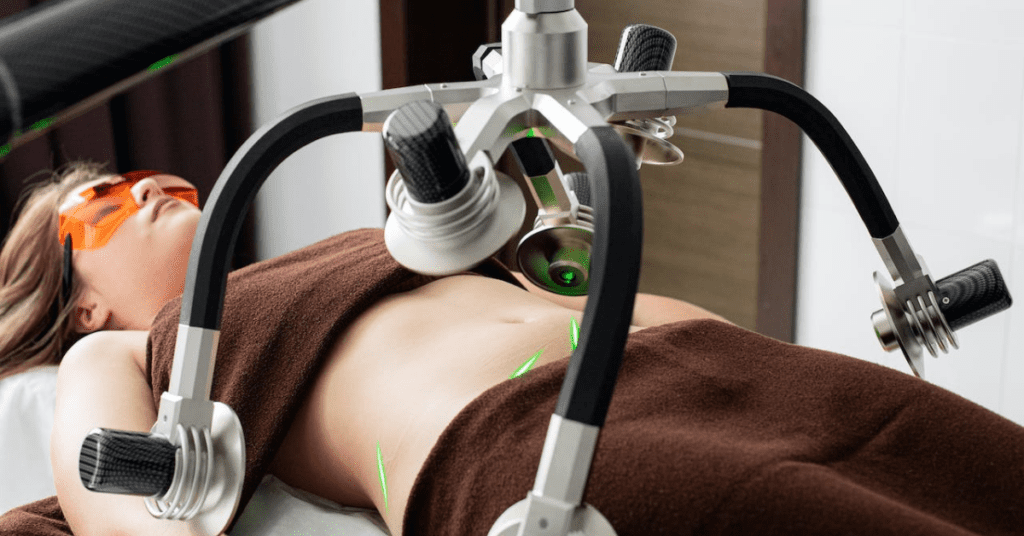Women’s sexual dysfunctions have become a topic of recent discussion and focus. These dysfunctions encompass various problems that negatively impact women’s sexual lives.
Issues such as sexual desire, pain and discomfort, and orgasmic difficulties cover the challenges women face, along with the reasons behind these problems. In this article, you will gain more insight into women’s sexual dysfunctions.
Diminished Desire
Women’s experiences with sexual desire vary widely. While some women regularly experience diminished sexual desire, others may encounter this issue intermittently. Diminished sexual desire can result from various factors, and each woman’s experience may differ.
There are numerous reasons why women may experience diminished sexual desire, including physical factors, psychological factors, relationship issues, and hormonal imbalances. For instance, hormonal changes, birth control methods, menopause, or certain medications can contribute to diminished sexual desire. Additionally, stress, depression, anxiety, relationship problems, or past sexual traumas may also be associated with diminished sexual desire.
Diminished sexual desire can have adverse effects on women’s sexual health and relationships. Therefore, women facing issues related to diminished sexual desire should seek expert help to understand and find solutions to this condition. Professionals can assess both physical and psychological health, provide suitable treatment options, and assist in coping with diminished sexual desire.

Pain and Discomfort
Pain and discomfort experienced by women during sexual intercourse pose a significant issue in sexual health. Many women may feel pain or discomfort during sexual intercourse, making the experience challenging. Various reasons can underlie these pain and discomfort conditions, and they may differ for each woman.
One common cause is vaginal dryness, where insufficient moisture in the vagina can lead to friction and, consequently, pain during sexual intercourse. Vaginal infections, tightness of vaginal muscles, and conditions like endometriosis can also contribute to pain and discomfort.
In some cases, psychological factors may cause pain and discomfort. Negative experiences related to sexual intercourse, stress, anxiety, or depression can lead to pain and discomfort during sexual activity. In such cases, a combination of physical and psychological treatments may be necessary.
Pain and discomfort during sexual intercourse can make it challenging and negatively affect a woman’s quality of sexual life. Therefore, it is crucial to identify the underlying causes of these issues and implement appropriate treatment methods. As experiences may vary, consulting with a healthcare professional to create a personalized treatment plan is essential.
Vaginismus
Vaginismus is a condition in which the muscles of the vagina involuntarily contract, hindering sexual penetration. This condition can make sexual intercourse painful or impossible for women. Vaginismus can result from various causes and may be influenced by physical, psychological, or relational factors.
Symptoms of vaginismus include involuntary contraction of vaginal muscles, pain or burning sensation, difficulty in engaging in sexual intercourse, and feelings of panic or fear. These symptoms can lead to avoidance of sexual intercourse or apprehension.
Treatment options for vaginismus include psychotherapy, exercises to relax pelvic floor muscles, sexual therapy, and couple’s therapy. Psychotherapy helps women explore the psychological factors contributing to vaginismus and cope with them. Pelvic floor exercises enable women to gain control over vaginal muscles. Sexual therapy and couple’s therapy strengthen communication between partners, making sexual intercourse more comfortable and enjoyable.

Dyspareunia
Dyspareunia is a type of female sexual dysfunction where women experience pain and discomfort during sexual intercourse. It prevents sexual intercourse from being a pleasurable experience and can affect sexual harmony between couples.
Symptoms of dyspareunia include vaginal pain, burning sensation, tightness, and discomfort during sexual intercourse. These symptoms may lead to a lack of interest in sexual activities and avoidance of sexual intercourse. Dyspareunia can result from various physical, psychological, or relational factors.
Physical causes may include vaginal infections, vaginal dryness, hormonal imbalances, and structural abnormalities in the genital organs. Psychological factors such as sexual traumas, stress, anxiety, and depression can also contribute. Relational factors like communication issues, lack of trust, and other relationship problems may play a role.
Treatment for dyspareunia depends on the underlying causes. Treatment options may include sexual therapy, psychotherapy, vaginal exercises, hormonal therapies, and medications. During the treatment process, effective communication and support between partners are crucial.
Dyspareunia negatively affects women’s sexual lives, and it is essential for women to take this condition seriously and consult with a healthcare professional. With appropriate treatment methods, dyspareunia can be managed, improving the quality of a woman’s sexual life.
Orgasmic Difficulties
Orgasmic difficulties are challenges that some women face in their sexual lives. Orgasm, the most intense pleasure moment during sexual intercourse, is an important experience for many women. However, some women may encounter difficulties achieving orgasm, which can adversely impact their sexual satisfaction and overall well-being.
Various factors contribute to orgasmic difficulties in women, encompassing both physical and psychological elements. Physical factors may include hormonal imbalances, chronic illnesses, medication usage, and anatomical issues in the sexual organs. Psychological factors, such as stress, depression, relationship problems, and past sexual traumas, can also play a role.
Orgasmic difficulties can lead to a lack of pleasure during sexual intercourse, sexual disinterest, and painful sexual experiences. When women face such challenges, there are several treatment options available. It is crucial to first identify the root cause of the issue, making consulting with a healthcare professional imperative.

Anorgasmia
Anorgasmia is a specific type of female sexual dysfunction characterized by the absence of orgasm or difficulty achieving orgasm during sexual activity. The symptoms include the inability to experience orgasm, a lack of sexual satisfaction, difficulty reaching climax, and dissatisfaction with sexual activity. Anorgasmia is a treatable condition, and women experiencing this issue should seek help from a healthcare professional.
The causes of anorgasmia can be multifaceted, involving physical, psychological, and relationship factors. Physical factors may include hormonal imbalances, chronic illnesses, medication side effects, and surgical interventions. Psychological factors such as stress, anxiety, depression, and relationship problems can also contribute. Relationship factors may include partner incompatibility, communication issues, and a lack of sexual desire.
Treatment options for anorgasmia may include sexual therapy, psychotherapy, hormonal treatments, medication, and lifestyle changes. The key is to address the specific cause underlying the condition. Seeking professional guidance is essential for women experiencing anorgasmia to explore suitable treatment methods and resolve their concerns.
Delayed Orgasm
Delayed orgasm is a form of female sexual dysfunction where achieving orgasm takes longer than usual or may not occur at all. This condition can significantly impact a woman’s sexual life and may lead to relationship challenges. Understanding the definition, symptoms, and possible causes of delayed orgasm is crucial for women facing this issue.
Symptoms of delayed orgasm include prolonged sexual arousal, delayed or absent orgasm during sexual activity, and difficulty reaching climax despite heightened arousal. Despite intense stimulation during sexual intercourse, some women may find it challenging to achieve orgasm.
Delayed orgasm can have various causes, encompassing physical and psychological factors. Physical factors may include hormonal imbalances, medication side effects, nervous system disorders, and certain health conditions. Psychological factors such as stress, anxiety, depression, and past traumatic experiences can also contribute.
The treatment for delayed orgasm depends on identifying and addressing the underlying causes. Treatment options may include hormonal therapy, medication, sexual therapy, and counseling. Lifestyle changes and effective communication with a partner are also integral aspects of the treatment process.
Women experiencing delayed orgasm should consult with a healthcare professional to undergo a comprehensive evaluation and determine an appropriate treatment plan.

Frequently Asked Questions
- What is female sexual desire?
Female sexual desire refers to the presence of diminished or absent desire or arousal for sexual activities. This condition can result from various factors, leading to difficulties during sexual intercourse. - What is vaginismus, and how is it treated?
Vaginismus is the involuntary contraction of vaginal muscles during sexual intercourse, making penetration painful or impossible. Treatment involves therapy sessions led by a psychologist or sexual therapist. These sessions focus on relaxing and controlling vaginal muscles. - What is anorgasmia, and how is it treated?
Anorgasmia is the inability to experience orgasm or difficulties in reaching climax during sexual activity. Treatment options include sexual therapy, psychotherapy, hormonal treatments, medication, and lifestyle changes. Seeking guidance from a healthcare professional is crucial for tailored treatment. - Is experiencing pain and discomfort during sexual intercourse normal?
While mild discomfort during sexual intercourse may be normal, severe pain or persistent discomfort requires consultation with a healthcare professional. Various factors could contribute to these issues, and they are often treatable. - What are the causes of delayed orgasm in women?
Delayed orgasm in women can result from physical factors like hormonal imbalances, medication side effects, or psychological factors such as stress, anxiety, and depression. Identifying the specific cause is essential for effective treatment. - What is anorgasmia, and can it be treated?
Anorgasmia is the inability to experience orgasm or difficulties in reaching climax during sexual activity. It is a treatable condition, and treatment options include sexual therapy, psychotherapy, hormonal treatments, medication, and lifestyle changes. Consulting with a healthcare professional is important for personalized guidance. - What is delayed orgasm, and how can it be addressed?
Delayed orgasm is a condition where achieving orgasm takes longer than usual or may not occur at all. Treatment involves identifying and addressing the underlying causes, which may include hormonal imbalances, medication side effects, psychological factors, or relationship issues. Seeking professional help is crucial for effective treatment.

